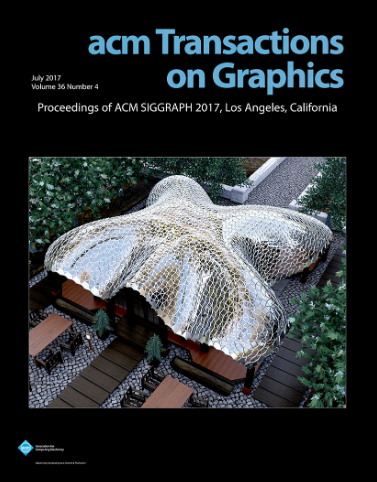FLoD: Integrating Flexible Level of Detail into 3D Gaussian Splatting for Customizable Rendering
IF 9.5
1区 计算机科学
Q1 COMPUTER SCIENCE, SOFTWARE ENGINEERING
引用次数: 0
Abstract
3D Gaussian Splatting (3DGS) has significantly advanced computer graphics by enabling high-quality 3D reconstruction and fast rendering speeds, inspiring numerous follow-up studies. However, 3DGS and its subsequent works are restricted to specific hardware setups, either on only low-cost or on only high-end configurations. Approaches aimed at reducing 3DGS memory usage enable rendering on low-cost GPU but compromise rendering quality, which fails to leverage the hardware capabilities in the case of higher-end GPU. Conversely, methods that enhance rendering quality require high-end GPU with large VRAM, making such methods impractical for lower-end devices with limited memory capacity. Consequently, 3DGS-based works generally assume a single hardware setup and lack the flexibility to adapt to varying hardware constraints. To overcome this limitation, we propose Flexible Level of Detail (FLoD) for 3DGS. FLoD constructs a multi-level 3DGS representation through level-specific 3D scale constraints, where each level independently reconstructs the entire scene with varying detail and GPU memory usage. A level-by-level training strategy is introduced to ensure structural consistency across levels. Furthermore, the multi-level structure of FLoD allows selective rendering of image regions at different detail levels, providing additional memory-efficient rendering options. To our knowledge, among prior works which incorporate the concept of Level of Detail (LoD) with 3DGS, FLoD is the first to follow the core principle of LoD by offering adjustable options for a broad range of GPU settings. Experiments demonstrate that FLoD provides various rendering options with trade-offs between quality and memory usage, enabling real-time rendering under diverse memory constraints. Furthermore, we show that FLoD generalizes to different 3DGS frameworks, indicating its potential for integration into future state-of-the-art developments.FLoD:将灵活的细节级别集成到3D高斯飞溅中,用于可定制的渲染
3D高斯喷溅(3DGS)通过实现高质量的3D重建和快速渲染速度,具有显着先进的计算机图形学,激发了许多后续研究。然而,3DGS及其后续工作仅限于特定的硬件设置,要么只能在低成本配置上,要么只能在高端配置上。旨在减少3DGS内存使用的方法可以在低成本GPU上进行渲染,但会损害渲染质量,这无法在高端GPU的情况下充分利用硬件能力。相反,提高渲染质量的方法需要具有大VRAM的高端GPU,这使得这些方法对于内存容量有限的低端设备来说不切实际。因此,基于3d的作品通常采用单一硬件设置,缺乏适应不同硬件约束的灵活性。为了克服这一限制,我们提出了3DGS的灵活细节水平(FLoD)。FLoD通过关卡特定的3D比例约束构建了一个多层次的3DGS表示,其中每个关卡独立地重建了不同细节和GPU内存使用的整个场景。引入了逐级培训策略,以确保各级别之间的结构一致性。此外,FLoD的多级结构允许在不同的细节级别上选择性地呈现图像区域,从而提供额外的内存高效呈现选项。据我们所知,在之前的作品中,将细节水平(LoD)的概念与3DGS相结合,FLoD是第一个遵循LoD的核心原则,为广泛的GPU设置提供可调选项。实验证明,FLoD提供了各种渲染选项,在质量和内存使用之间进行权衡,在不同的内存限制下实现实时渲染。此外,我们表明FLoD可以推广到不同的3DGS框架,这表明它有可能集成到未来的最先进的开发中。
本文章由计算机程序翻译,如有差异,请以英文原文为准。
求助全文
约1分钟内获得全文
求助全文
来源期刊

ACM Transactions on Graphics
工程技术-计算机:软件工程
CiteScore
14.30
自引率
25.80%
发文量
193
审稿时长
12 months
期刊介绍:
ACM Transactions on Graphics (TOG) is a peer-reviewed scientific journal that aims to disseminate the latest findings of note in the field of computer graphics. It has been published since 1982 by the Association for Computing Machinery. Starting in 2003, all papers accepted for presentation at the annual SIGGRAPH conference are printed in a special summer issue of the journal.
 求助内容:
求助内容: 应助结果提醒方式:
应助结果提醒方式:


